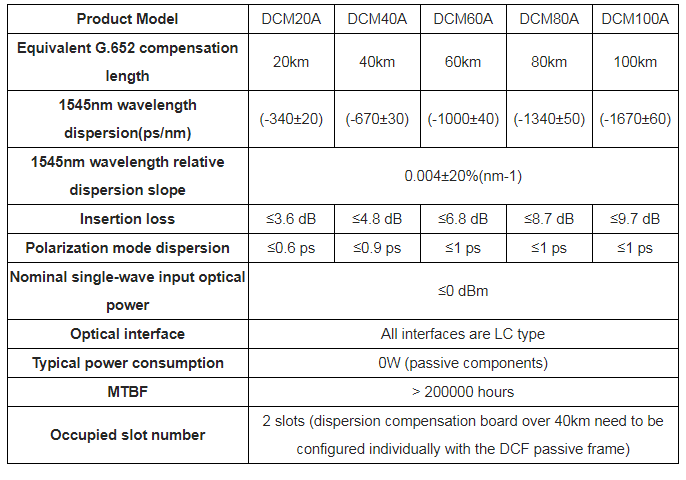
-
DCM Business Card
Category:DCM Business Card
Code:HOO-DCMBC-001
Dispersion Compensation Principle
Dispersion is one of the transmission properties of the optical fiber, and the optical pulse signal will be broadened in time after transmission in the optical fiber for a distance, which produces intersymbol interference, thus increasing the error rate and affectingthe quality of communication.
The higher the data rate is, more easily the intersymbol interference will present
The longer the transmission distance is, more easily the intersymbol interference will present.
Product
DCM model is a negative dispersion optical fiber launched by HOOOSI company , which is a new type of single mode optical fiber designed for presently laid G.652& G.655standard single-mode optical fiber; the dispersion of G.652 optical fiber in the vicinity of 1550nm wavelength is positive (17-20) ps/nm (km), and the dispersion of G.655 standard optical fiber in the vicinity of 1550nm wavelength is positive (4-6) ps/nm (km), with a positive dispersion slope. So we need to add dispersion compensation fiber with negative dispersion into the optical fiber then conduct the dispersion compensation and make sure that the total dispersion of the whole optical fiber links is near zero, so as to realize high speed, large capacity and long distance communication.


